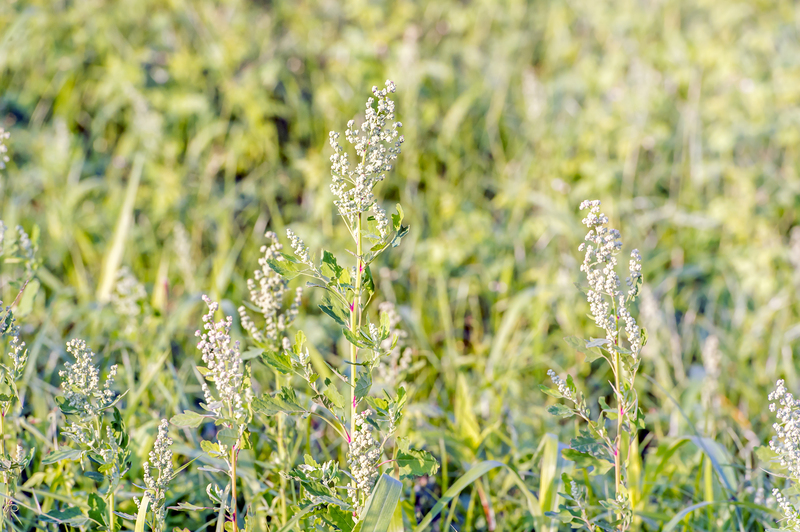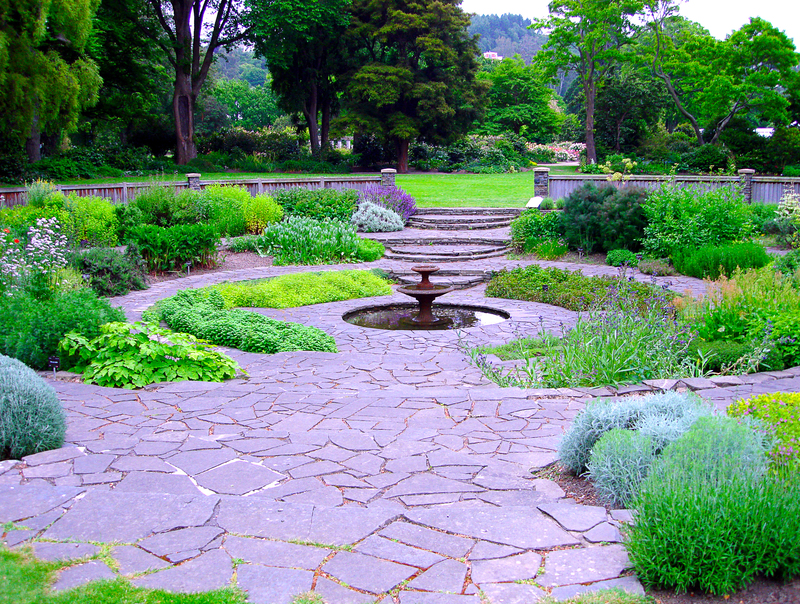The Ultimate Method for Restoring Patio and Paving Surfaces
Posted on 02/10/2025
The Ultimate Method for Restoring Patio and Paving Surfaces
Is your outdoor space starting to look tired, worn, or covered in unsightly stains? Patios and paving surfaces are the backbone of any beautiful backyard, but weather, grime, and time can take a serious toll on their appearance. This comprehensive, step-by-step guide reveals the ultimate method for restoring patio and paving surfaces--helping you breathe new life into your outdoor areas, improve longevity, and add value to your home.
Why Restore Your Patio and Paving Surfaces?
Your patio, driveway, or paved walkway is more than just a functional space--it's an aesthetic, structural asset to your property. Routine wear, moss, algae, efflorescence, and even rust stains can degrade these surfaces over time. Restoring patio and paving surfaces not only improves curb appeal but also prevents hazards like slippery growth and costly structural damage.
- Enhance property value: A beautifully restored patio creates an inviting atmosphere.
- Improve safety: Remove moss and algae to prevent slips and falls.
- Extend lifespan: Sealing and repairing pavers guards against weathering.
- Promote cleanliness: Avoid unsightly grime and stubborn stains that attract pests.

Understanding The Causes of Patio and Paving Surface Damage
Before restoring your surfaces, it's essential to understand the main causes of deterioration:
- Weather: Freeze-thaw cycles, rain, and UV rays can erode and fade surfaces.
- Organic growth: Moss, lichen, and algae thrive in damp, shaded conditions, breaking down stone and concrete.
- Efflorescence: White chalky deposits from salt and mineral migration can stain and weaken pavers.
- Oil and rust stains: Motor oil, barbecue spills, or iron objects oxidizing can leave stubborn marks.
- Subsidence: The ground settling or improper installation may cause sagging or uneven surfaces.
The Step-by-Step Method for Restoring Patios and Paving
Ready to begin the transformation? This proven, expert-endorsed process combines deep cleaning, targeted repairs, and professional-grade protective treatments for patios and paving surfaces of all types.
Step 1: Inspect and Assess the Surface
Begin by thoroughly inspecting the entire area. Make note of:
- Cracked or broken pavers
- Uneven or sunken sections
- Areas heavily infested with moss or algae
- Persistent stains or discoloration
- Loose jointing sand or mortar
_Take photographs or jot down a checklist for each issue you identify._
Step 2: Prepare the Area
- Remove furniture, pots, grills, and decor.
- Sweep loose debris using a stiff-bristle broom.
- Protect surrounding plants and grass with plastic sheeting.
- Pre-wet nearby plants if using chemical cleaners to shield them from spray drift.
Step 3: Deep Clean the Surface
Cleaning is the cornerstone of paving and patio restoration. Two main approaches exist: chemical cleaning and mechanical cleaning.
Chemical Cleaning
- Apply an algae, moss, and lichen remover (check the label for suitability on your surface type).
- For oil stains and rust, use specialized stone or concrete cleaners.
- Let the cleaner dwell as per manufacturer's instructions to penetrate grime and stains.
Mechanical Cleaning
- Pressure washing is highly effective for stubborn dirt but must be done correctly:
- Use a fan jet attachment to avoid damaging pavers.
- Angle spray at 30-45 degrees and keep moving to prevent etching.
- For intricate or delicate patios, use a scrubbing brush and mild detergent instead.
Tip: Always test cleaners and pressure washers on a small, inconspicuous area first.
Step 4: Remove Weeds, Moss, and Algae
Select the best tools and products for root removal:
- Use a weeding tool or thin trowel to extract growth from crevices.
- Apply an eco-friendly weed and moss killer to prevent regrowth.
- Scrape off thick moss with a wire brush.
_Allow the patio to dry completely to reveal the true extent of cleaning needed._
Step 5: Repair Damaged or Sunken Areas
- Remove cracked or uneven pavers and reset them onto a new bed of sand or mortar, making sure they're flush with the surface.
- Fill subsided sections with additional sub-base as needed to stabilize.
- Replace any missing or broken stones, bricks, or tiles.
Step 6: Re-point or Re-sand the Joints
- If your patio uses sand-filled joints (as with block paving), brush fresh kiln-dried sand into all gaps using a push broom. Compact well!
- For patios with mortar joints, remove old, crumbling mortar and refill using a pointing trowel and suitable jointing compound.
Benefits: This step enhances stability, deters weed growth, and gives a crisp, finished look.
Step 7: Apply a High-Quality Patio or Paving Sealer
This is the game-changer for a long-lasting, like-new finish:
- Choose the right sealer type:
- Penetrating sealers are best for natural stone, as they repel water without altering appearance.
- Acrylic or polyurethane sealers offer a wet-look or enhanced color and extra protection for concrete and clay pavers.
- Wait until the surface is completely dry before application.
- Use a long-pile roller or low-pressure garden sprayer for even coverage.
- Apply two coats where heavy traffic or extra protection is needed.
- Allow full curing time (usually 24-48 hours) before walking or placing furniture back.
A premium paving sealer locks out new stains, inhibits algae, and extends the life of your restoration work.
Alternative and Advanced Patio Restoration Techniques
For heavily damaged or antique surfaces, consider these professional restoration options:
- Sandblasting or soda blasting: Removes deep-seated stains, paints, or weathered surfaces (best for stone, brick, or concrete).
- Resurfacing or overlays: Concrete patios can receive a new thin overlay for a brand-new look.
- Stain or dye treatments: Refresh faded colors or add decorative color patterns.
- Specialist cleaning for natural stone: Seek expert advice for sensitive materials like limestone and sandstone to avoid damage.
Expert Tips for Maintaining Your Restored Outdoor Surfaces
To get the most from your patio and paving surface restoration, follow these maintenance strategies:
- Regular sweeping: Prevents build-up of debris and growth of weeds and moss.
- Annual pressure washing: Keeps surfaces dirt-free and fresh looking.
- Top up jointing sand or mortar as needed: Keeps pavers in place and resists weeds.
- Re-seal surfaces every 2-3 years: Maintains stain resistance and color vibrancy.
- Promptly treat oil and food spills: Stops permanent staining.
_Quick action prevents minor issues from becoming costly, difficult problems down the line._
Most Popular Products for Patio and Paving Restoration
Consider these product categories when restoring or maintaining your outdoor surfaces:
- Algae, moss, and lichen removers: Biodegradable and eco-friendly options available.
- Efflorescence and stain cleaners: Specifically designed for mineral and rust stains.
- Jointing compounds: Weatherproof, self-setting options for easy application.
- Paving sealers: Penetrating or film-forming, with matte or glossy finishes.
- Pressure washers: Adjustable settings for gentle or powerful cleaning.

Common Questions on Restoring Patio and Paving Surfaces
Can I restore my patio myself, or do I need a professional?
Most homeowners can handle basic patio restoration with the right tools and products. For extensive repairs (like subsidence or major paver replacement), consider consulting a professional landscaper or paving specialist.
How long does patio and paving restoration last?
A well-restored and properly sealed patio can maintain its appearance for 2-3 years or more with basic upkeep. Re-seal high-traffic areas more frequently.
Will pressure washing damage my patio?
Pressure washing is safe if used with the correct attachment and technique. Avoid too much pressure and test a small area first, especially on aged or soft stone.
How do I choose the right patio sealer?
Consider your surface material, desired finish (matte, glossy, or natural), and level of protection needed. Penetrating sealers suit natural stone, while acrylic or polyurethane options are ideal for concrete and clay pavers.
The Takeaway: Achieving the Ultimate Patio and Paving Surface Restoration
Reviving your outdoor spaces doesn't require a costly renovation--just the ultimate method for restoring patio and paving surfaces: thorough cleaning, careful repairs, re-jointing, and applying a quality paving sealer are the secrets to an impressive, long-lasting finish.
Refresh your patio or driveway now and enjoy stunning curb appeal, improved safety, and a welcoming space for relaxing or entertaining all season long.
Ready to Get Started?
With these comprehensive restoration tips and maintenance techniques, you have all you need to bring your old patios and paving back to life. Whether your focus is deep cleaning paving slabs, restoring faded patio stones or protecting block paving, use this guide as your go-to resource for a beautiful, durable outdoor retreat!




